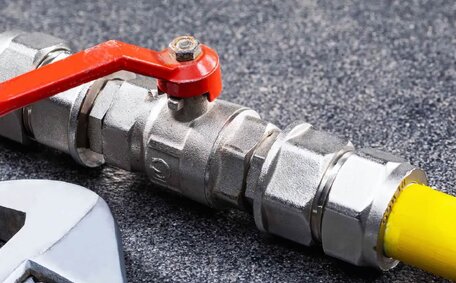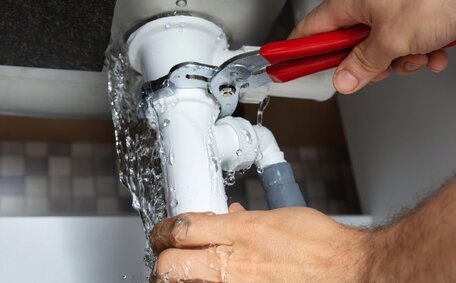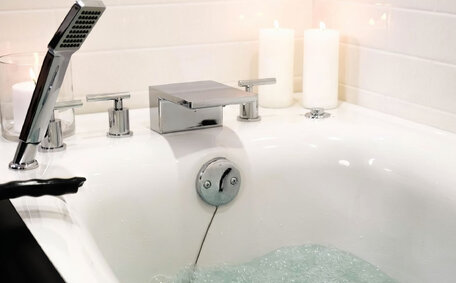Introduction to Pipe Relining: A Minimally Invasive Pipe Repair Method
Sewer pipe relining is an innovative, no-dig repair method that can renew damaged pipes from the inside out. This minimally invasive technology provides a long-lasting alternative to traditional pipe replacement by sealing cracks, holes, root damage in cracked broken pipes, and other common issues without causing major damage your property.
Also known as trenchless sewer pipes lining or Cured-in-Place Pipe (CIPP), Pipe relining uses flexible epoxy resin liners that are impregnated into the pipe without need dig, then expanded and hardened with steam or hot water to form a durable new interior surface. This seals damages and renews the pipe with a jointless and corrosion-resistant material that often lasts 50 years or more. Relined drains sewer pipes can be used immediately after curing and are actually a long lasting solution stronger than brand new pipes in some cases.
Pipe relining is suitable for all common piping materials including cast iron, clay, concrete, and PVC. Pipe relining is suitable for all common piping materials including cast iron, clay, concrete, and PVC.
It provides a much less expensive solution for repairing pipes with a wide range of damages, as well as improving flow capacity in older pipes that have built up mineral deposits and blockages over decades.
Because our expert plumbers use existing points of access like manholes or plumbing fixtures, our no dig pipe relining can be used thus you don’t need dig up massive trenches or jackhammer floors. Most relining operations pipes can be completed in just one day while occupants remain in the building or homeowners go about their business as usual.
This advanced method repairs pipes without the extensive mess and disruption associated with traditional pipe replacement.
What Causes Holes and Corrosion Damage in Pipes
There are several common causes of holes, cracks, and corrosion damage in pipes:
- Natural wear and tear over time as pipes age
- Chemical reactions between pipe materials and substances flowing through them
- Corrosion from contact with water or acidic soil
- Damage from tree roots growing into pipes
- Impact damage from diggers, jackhammers, large vehicles etc
Environmental conditions in the Mosman area can accelerate some of these issues. The clay soil also contains minerals that react with copper pipes.
Our coastal location means pipes are exposed to salty air and water which causes corrosion. Our coastal location means pipes are exposed to salty air and water which causes corrosion.
As underground pipes corrode from the outside in and flow diminishes from mineral build-up, undetected holes and cracks allow soil, grit and roots to penetrate pipes. Catching and relining smaller damages early on with trenchless technology can restore pipes and prevent more disruptive repairs down the track.
This further accelerates deterioration until major leaks, blockages, or collapses occur.
When to Consider Relining vs Replacing Pipes with Holes
Pipe relining is often a smarter solution than full replacement when most pipe conditions involve small to medium sized holes or cracks. As long as the overall structure of your plumbing remains intact, holes spanning less than half the pipe’s diameter can usually be sealed effectively.
Signs that pipes are good candidates for relining include:
- Multiple holes spread along the length of the pipe
- Isolated sections of damage rather than widespread corrosion
- Areas near joints or connections that commonly fail first
- Leaks detected during routine plumbing inspections
Since pipe relining restores structural stability, enhances flow capacity and prevents further deterioration, it can used as a reliable long-term method for restoring your damaged drain pipe infrastructure across Mosman and Sydney.
Compared to digging up your floors and landscapes to install new piping, relining solves damage economically with far less disruption to your property or the surrounding environment. The carbon footprint of relining stormwater drains through our process is also up to 90% less than typical replacement projects.
In cases of complete pipe failure, collapsed sections, or severe corrosion spanning over 50% of the diameter, total replacement may be unavoidable. Our team plumbers conduct pipe inspections to determine whether relining or full pipe replacement is the most viable solution.
How Pipe Relining Repairs Holes and Corrosion Damage
The pipe relining process can get a structural repair that seals holes, cracks, and corrosion damage from the inside out. It starts with A CCTV drain camera inspection can offer insights about pipe health, identifying problem areas and assess if relining is the most suitable intervention.
Our does pipe relining team uses jetting and other preparation methods to clean the pipe interior and remove any obstructions or mineral deposits. Once prepped, our experts saturate a resin-impregnated liner with hot water or steam then insert it into pipe, negating the need to dig.
As the flexible liner expands, it moulds tightly to the pipe walls, sealing over holes, cracks, and corroded sections to create a smooth, jointless surface within pipe. We maintain temperature and hydraulic pressure for several hours while the pipe relining resin cures rock-hard.
The finished product from sewer pipe repair is a durable epoxy barrier that prevents leaks, restores flow capacity, and provides long-term protection against further corrosion or other damage, ensuring the inside old pipe can function efficiently. Our proficient, high pressure techniques repair pipes with an expected structural lifespan matching that of new installations.
Because pipe relining repairs damages from the inside and requires no excavation, it avoids the major disturbances to landscapes, floors, and walls that come with replacing corroded plumbing. With less mess and disruption, pipe relining safeguards your garden and helps keep your home business running as usual during and after pipe repairs.
Limitations of Relining Pipes with Extensive Damage
While Pipe relining can repair your pipes with common issues, but it does have limitations when pipes in your property have extensive corrosion or collapse damage.
Pipe relining may not be the only option if pipes have:
- Large sections of missing pipe surface area
- Holes or openings wider than 50% of the pipe diameter
- Widespread structural damage along over 30% of the pipe length
In cases of severe damage to the sewer line, the existing pipe can no longer provide adequate structural support for a relining application. Attempting to reinforce already weakened pipes with additional barriers may result in future leakage or other failures.
It is important to have Mosman Plumbing’s drain camera inspection team evaluate your pipes first. Our experts can determine if sections need replacement or if total pipe failure is imminent, making full excavation and installation of new piping necessary.
While relining has great benefits, pipes with extensive deterioration often require complete replacement. Contact our team for professional drain assessments and advice on achieving long-term drains and sewer pipes repairs.
Selecting Quality Epoxy Resins for Durable Pipe Repairs
The type of epoxy resin used for pipe relining is crucial for achieving durable, long-lasting repairs that stand the test of time. As leading plumbers in Mosman, we only use industry-tested epoxy resins that meet rigorous performance standards for strength, adhesion, chemical resistance, and longevity.
The materials used in our high-quality vinyl ester and polyester resin systems are formulated specifically for CIPP pipe renewal to withstand decades of exposure to flowing water, gases, soils, roots and temperature fluctuations without deterioration. We select branded resins like Interplastic, Ashland, and Polystrand which have proven effective in restoring old pipes across Sydney since pipe relining originated in the 1970’s.
Inferior resins prone to cracking, peeling or leaching over time can undermine repairs, so qualified technicians and proper wet-out impregnation of the liner are also vital. Our specialist plumbers are fully certified to ISO standards in the latest pipe lining equipment and procedures to get consistent, quality results.
By combining over 50 years collective relining experience with rigorous controls to only use industry-leading epoxy resins thoroughly saturated into the liner, we deliver pipe repairs that meet manufacturer specifications for 50+ year durability.
This ensures our pipe lining work, assured by long warranties, completes the job done with a long-term solution for residential and commercial customers to enjoy trouble-free, leak-free piping for decades.
Identifying if Your Pipes are a Good Candidate for Relining
Several factors determine whether your Drain pipes are suitable for relining instead of replacement:
- Pipe material – Most pipes like concrete, PVC, copper and cast iron can be relined, effectively mending cracked and broken pipes.
- Pipe size – Relining works for pipes from 100mm to 1200mm diameter, facilitating repairs of blocked drains without need to dig.
- Location and access – Existing access points like manholes enable our team to reline pipes without the extensive need to dig.
- Extent of damage – Isolated holes and cracks or short sections of corrosion damage are ideal for relining repairs.
- Structural integrity – Relining requires the pipe to still provide adequate structural support.
To evaluate if pipe relining is right for your sewer situation, we first perform a drain camera inspection. CCTV cameras examine the pipeâ€TMs interior condition, identifying damaged sections and suitability for trenchless repair.
Based on key factors like severity of deterioration and overall pipe soundness, we determine if sections require replacement or can be restored through relining. Contact Mosman Plumbing to schedule an inspection so we can advise the best pipe renovation options.
The Long-Term Effectiveness of Pipe Relining Solutions
Pipe relining provides a long-lasting, cost-effective solution for restoring damaged drainage pipes and preventing future deterioration. Properly installed pipe liners have an expected lifetime of 50 years or more, allowing you to repair your plumbing system less frequently.
Because the flexible epoxy resin bonds tightly to the inside walls of the existing pipe, the we offer carried out not only seals current cracks and holes but also provides a smooth, protective barrier against future damage from tree roots, corrosion, soil movement, chemical reactions or other issues.
Relined pipes often enhance your entire plumbing system, sporting better flow capacity and reduced susceptibility to blockages compared to older pipes, thereby preventing a blocked drain with mineral build-up. Any protruding service connections are also encapsulated to limit root regrowth. This combined prevention and protection leads to excellent long-term performance.
Considering the typical lifespan of many pipe materials, our quality pipe relining services effectively restore drains and sewer pipes to better than new condition. The out pipe relining process can be completed promptly without major digging or destruction to landscaping too.
With over 50 years of cumulative expertise, we offer comprehensive services to repair broken pipes with relining across Sydney, and Mosman Plumbing stands behind the proven long-term effectiveness of our installations. Contact us to discover how our services compare to other pipe relining options and to determine if trenchless relining is the most sensible piping renovation for your home or business.
Pipe Relining vs Replacement: Cost and Process Comparison
When it comes to repairing damaged drainage pipes, homeowners essentially face two options: traditional pipe replacement by excavation or trenchless pipe relining. Weighing the differences in cost and process intricacies can help determine the most appropriate solution.
Full sewer pipe replacement, a drain excavation operation, involves jackhammering floors or digging up yards and landscapes to remove damaged pipe sections. New piping for a broken pipe must be laid and connected before backfilling. This destructive process often takes 3-5 days and requires restoring destroyed landscaping, concrete or flooring.
In contrast, Pipe relining, alternative to traditional methods, is a less invasive interior pipe restoration process completed in just one day, ensuring minimal disruption. Our experts use existing access points to install a flexible epoxy liner inside an old pipe, calling upon a repair method that doesn’t require excavation.
As it hardens, the liner seals cracks and holes, providing corrosion protection and creating a new pipe inside the existing one.
Pipe relining can save homeowners significant cost, being more cost-effective and less disruptive, with no excavation or new materials required. The limited disruption also means residents or business owners can get back to normal swiftly, with the premises remaining functional during and after repairs. Less risk of property damage or safety issues makes relining not just an economical choice but also ensures you can get back to a much more sensible, low-impact routine.
While our advanced repair methods have limitations for severely deteriorated pipes, they effectively and affordably restore most drainage systems for 50+ years. Contact Mosman Plumbing to inspect your pipes and determine if trenchless pipe relining or full replacement is the right solution for your situation.
FAQs About Relining Pipes with Holes and Corrosion
Here are some frequently asked questions about relining pipes that have holes or corrosion damage:
How long does the pipe relining process take?
Most jobs replacing old pipes with relining take just one day to complete. After preparing and accessing the pipes, our team can clean, epoxy line, and cure the resin to renew your pipes within 8 to 12 hours. Properties remain fully usable during the fast drain repair curing process.
Does relining prevent future pipe damage?
Properly installed pipe lining creates a protective epoxy barrier inside your pipes. This smooth new inner wall seals cracks and holes while also guarding against future damage to your plumbing system from corrosion, leaks, roots, buildup and more. So yes, to learn more about how quality pipe relining prevents recurring pipe damage, continue reading.
Is pipe relining environmentally friendly?
Absolutely! This is why we advocate pipe relining; because no trenches need excavating and no waste pipes go to landfill, making its carbon footprint around 90% less than traditional replacement. The minimal digging and ground disruption also benefit local ecosystems.
What other pipe issues can relining address?
Beyond sealing cracks, holes and corrosion, relining also repairs joint leakage/infiltration, removes old mineral buildup to improve drainage flow, encapsulates protruding service connections to prevent root regrowth, and restores structural stability in deteriorating pipes.
Have more questions?
As pipe relining experts, Mosman Plumbing has over 50 years combined expertise with pipe inspections and no-dig relining repairs. Get in touch with our team to know about the suitability of pipe relining for your specific situation or to schedule an assessment of your pipes.






